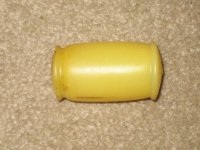Does anyone know if I can purchase and install only the float on my 71 TR6 fuel sending unit? My fuel gauge reads "E", and if I use a metal coat hanger to lift the float inside the gas tank the gauge will move. I am guessing that the float has a crack or a hole in it. The PO told me it used to work just after the rebuild, then shortly there after it started to slowly sink. We both guessed the float had a small crack he did not notice when putting it back together. I would like to avoid spending $50 on a new Unit from Moss if I can. I would also like to avoid having to take the car apart twice if I can. Any help is appreciated.
Thanks,
Brent
Thanks,
Brent

 Hi Guest!
Hi Guest!

 smilie in place of the real @
smilie in place of the real @
 Pretty Please - add it to our Events forum(s) and add to the calendar! >>
Pretty Please - add it to our Events forum(s) and add to the calendar! >> 
